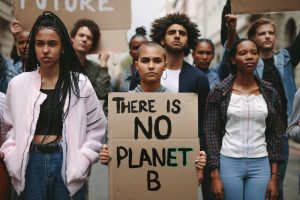
“When will this be over?” It is the question that pops in everyone’s head, as more and more people are getting infected day by day, with many countries being on lockdown and most people living in self-isolation. Here’s what experts have to say about it.
Living in self-isolation not only has profound socio-political consequences, but it also has negative effects on people’s mental health and well-being. Even though many studies are already showing that quarantine and isolation methods are very effective and that we should continue to keep our physical distance, it is hard not to grow impatient while being forced to stay indoors 24/7. It’s normal to wonder how long this is likely to last.
To answer this question, we also looked at some of the predictions made by researchers regarding the availability of a vaccine and the impact it will have on the outcome of the pandemic.
The importance of vaccines in a pandemic
Vaccines are very important in putting a stop on a pandemic. But when will those vaccines become available? Additionally, some experts have warned against relying on vaccines as a strategy for putting a stop on the current crisis.
According to studies, most vaccines take about 12–18 months to be approved, so it’s months away from being available to the entire population. One year is a very long time considering the situation and this period will likely cause lasting social and economic damage if the lockdown persists.
“Waiting for a vaccine should not be honored with the name ‘strategy;’ that is not a strategy,” Mark Woolhouse, a professor of infectious disease epidemiology at the University of Edinburgh, United Kingdom, says.
However, there are more optimistic opinions that believe a vaccine will be available much sooner than 12 months.
Vaccines
Sarah Gilbert, a professor of vaccinology at Oxford University in the U.K., and her team have been working on a SARS-CoV-2 vaccine, and she deeply believes that it will be available for the general population by fall.
Moreover, she also explains that normally, it may take years of trials before a vaccine reaches the population, but during the pandemic, scientists can fasten this process by doing as many of the necessary steps as possible in parallel.
“First, there is the need to manufacture the vaccine for clinical studies under tightly controlled conditions, certified and qualified — we need ethical approval and regulatory approval. Then, the clinical trial can start with 500 people in phase I,” she explains.
The vaccine could get approval “under emergency use legislation,” meaning that “in an emergency situation if the regulators agree, it’s possible to use a vaccine earlier than in normal circumstances,” explains Prof. Gilbert.
However, many other researchers still believe that such estimates are overly optimistic.
Still, experts have cautioned that such estimates are overly optimistic. Their comments shed light on the difficulties of making vaccines available in general, not just Prof. Gilbert’s.
For example, Prof. David Salisbury, associate fellow of the Centre on Global Health Security at the Royal Institute for International Affairs at Chatham House in London, U.K., warns, “[I]t is not just the availability of the first dose that we need to focus on.”
“We need to know by when there will be sufficient doses to protect all of the at-risk population, probably with two doses; and that means industrial scale manufacturing that governments do not have. It is also worth remembering that, too often, the bottlenecks for vaccine production are at the last stages — batch testing, freeze drying, filling and finishing: again, capacities that governments do not have.”
Prof. Ian Jones, a professor of virology at the University of Reading, U.K., stresses the importance of “good fortune” in vaccine research. Even if scientists produce a vaccine “sooner rather than later,” he says, “[t]his doesn’t necessarily mean that there will be enough doses for everyone to be vaccinated immediately, but with luck and commitment, this may be possible earlier than the often quoted 18-month-plus timetable.”
Another optimistic opinion comes from Martin Bachmann, who is convinced that a vaccine will be available in 6-8 months.
“The real question is, can you keep it down long enough to have a vaccine? Without a vaccine, we are maybe looking at something like a year. But this would mean that 60–70% of the population would have had exposure to the virus,” explains Prof. Martin Bachmann, a professor of vaccinology at the Jenner Institute at the University of Oxford in the U.K. and Head of the Department of Immunology at the University of Bern in Switzerland.
From pandemic to endemic
Other experts also fear the possibility that this pandemic will lead to SARS-CoV-2 becoming endemic, which means the virus will stay with us forever.
Regarding whether he thinks there is an end in sight, Prof. Heymann, an infectious disease specialist with the London School of Hygiene & Tropical Medicine, U.K. said, “with all new and emerging infections, what’s unknown is what the outcome will finally be — the final destiny of the infection. HIV emerged in the early 20th century and then became endemic throughout the world.”
“Seasonal influenza has emerged from the animal kingdom, and there are currently three endemic seasonal influenza viruses carried by humans,” he continued, adding, “there are many other diseases that are endemic, like tuberculosis, that are also thought to have come from the animal kingdom,” he added.
“The question is: Will this new coronavirus become endemic like those infections, or will it be more like Ebola, which can be contained when an outbreak occurs, only to reappear at some future time? No one can predict with certainty the destiny of this virus.”
According to the WHO, certain severe measures in China have been very effective in curtailing outbreaks in China. But now, the question is: What happens when they release those severe measures? Will there be a second wave of infection? Nobody is able to predict this with certainty.”
“Certainly, for the next 2 to 3 months, all of the countries that have a growing epidemic locally will be working hard to get it under control. And then we have to work out how we get people back to the life that they were used to, and how to get the economies running properly,” explains Prof. Paul Kellam, an infectious disease specialist, and professor of virus genomics at Imperial College London, U.K.
“At the moment, that is something that we’ve got to think about and work quickly toward, but it looks like we’re going to be in this for the long haul.”
“Of course, there are already four human coronaviruses that are endemic in the human population,” Prof. Kellam continued. “These cause seasonal colds and respiratory illnesses, some of which can be quite serious in people with underlying health conditions. How they first came into the human population, and how fast they became an endemic infection is not known.”
“I think what we’re looking at now with SARS-CoV-2 is that process of becoming a new seasonal human pathogen. And so, in that sense, humans will be with this virus forever.” – Prof. Paul Kellam











































